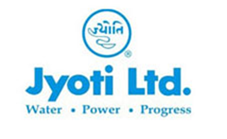
Power India found that Tata Power Limited is expecting to commission second unit (800 MW) of its 4000 MW Ultra Mega Power Project (UMPP) at Mundra Port, Gujarat by end August 2012.
Tata Power is developing a 4000 MW UMPP at Mundra in the state of Gujarat which comprises of 5 Coal Fired Super Critical units of 800 MW. Tata Power bagged the Mundra project in 2007 on the basis of the lowest tariff bid of Rs 2.26 a unit, but a change in the coal pricing policy in Indonesia has upset the cost structure of the project.
First unit of this project has been commissioned in March 2012 and with that the said UMPP was country’s first UMPP to start generation.
Mr. Anil Sardana, Managing Director, Tata Power has told the reporters during the CII conference that, the company is expecting to commission the second unit by August 2012.
Further, Mr. Sardana said that work is progressing on vary fast track basis for the remaining three units of Mundra UMPP and that it was committed to commission them with a time gap of four to five months between the units.
The Project when commissioned will supply power to various states such as Gujarat, Maharashtra, Rajasthan, Haryana & Punjab. The Project will utilise the imported coal with the super critical boiler technology which is environment friendly as per the company officials.
However, currently the project is using 50% of low grade coal and 50% of normal grade coal.
In the current fiscal, Tata Power expects to import 15 million tonnes coal, which would be utilised for Mundra and Trombay projects, Sardana said. The company imported about 5.5 million tonnes coal in 2011-12.
More Literature on this topic:
Power India – A popular blog on Indian Power Sector




